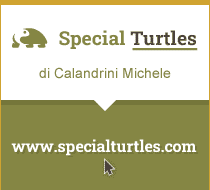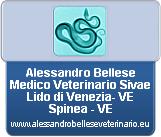Kleinmann’s tortoise is the smallest tortoise among Mediterranean species and one of the smallest tortoises in the world.
Phylogenetic studies show, quite curiously, that it shares a common ancestor with Testudo marginata, which is the largest among the Mediterranean tortoises.
Testudo kleinmanni natural populations have been dramatically depleted in recent years (mature individuals are estimated at less than 5.000); this is why it is considered a critically endangered tortoise and it is listed in CITES Appendix I, as are Astrochelys yniphora and radiata.
Testudo kleinmanni
Kleinmann’s Tortoise, Egyptian Tortoise
Land-dwelling species
Lortet, 1883
Kingdom: Animalia
Phylum: Chordata
Class: Reptilia
Order: Testudines
Suborder: Cryptodira
Superfamily: Testudinoidea
Family: Testudinidae
Genus: Testudo
Species: Testudo kleinmanni
Geographic range
Kleinmann’s tortoises live on the eastern side of the North African coastal strip, that is to say in an area that stretches from Libya, along ancient Cyrenaica to Egypt and southern Palestine.
It is quite rare to spot individuals further than 120 Km inland.
Description
As already mentioned, Kleinmann’s tortoise is on the small side: females normally reach a length that varies from 10-11 cm to a maximum of 12-13 cm, while males are more slender, their size varying from 7-8 cm to a maximum of 9-10 cm. The average weight is 400-500 gr. in females and 200-250 gr. in males.
Their shells have high domes that range in colour from golden to bright straw to dull yellow or golden pale ivory, depending on age and the tortoise’s scutes have dark sidings that also fade with age.
The plastron is marked by one or two pairs of dark triangles, although these are absent in some specimens from northeastern Egypt, the Sinai and the Negev. These individuals had originally been defined as a distinct subspecies, called Testudo werneri , but this distinction has not had any feedback in genetic testing.
In addition, the plastron has two femoral and two anal mobile plates so as to make deposition easier; when retracted, the plates allow for greater protection of the hind limbs.
The tortoise has evenly yellow skin, big black eyes, it lacks thigh spurs , the tip of the tail has no terminal claw and the front limbs are wide and flat, a useful feature for burying itself in the sand.
Sexual dimorphism
Sexual dimorphism in this species is obvious: males are smaller than females, their tail is long and broad at the base, their plastron is concave and the supracaudal scute is facing inward. Females grow to a larger size than males; they have a short , broad tail and a flat plastron.
Diet
Testudo kleinmanni is a completely vegetarian species - only occasionally will it eat excrement or small carrion. It appreciates small pieces of fruit which can be provided in moderation once a month.
For proper growth and good health, it is advisable to feed the tortoise mainly wild-picked herbs such as dandelion, mallow, nettle, plantain, clover, chicory or , alternatively, when these are not available, romaine, endive and radicchio.
Always leave a decent amount of dried herbs or hay in the terrarium/enclosure so as to provide a sufficient supply of fibre in their diet.
If you provide a varied diet with the vegetables listed above, there will be no need for any artificial vitamin supplements. Moreover, it is advisable to leave a cuttlefish bone for your tortoise to nibble on as a calcium supplement.
Leave a bowl of water for 1-2 days in the terrarium/enclosure every 10 days so that it can hydrate at its convenience . It is also good to let the tortoise have short (10 min.) moisturizing baths in lukewarm water.
Breeding
This species does not hibernate: although some Anglo-Saxon breeders find it necessary to provide indoor accommodation during the winter season, there are several cases among enthusiasts in central and southern Italy who have been breeding these animals outdoors for years with excellent results, even from a reproductive point of view.
Several factors play a role when evaluating the specimen’s potential to hibernate outdoors. Firstly, it is essential that the animal is in good health, that it and has not been subjected to stressing conditions; the enclosure must have a good exposure to the sun , there must be many well-drained shelters, especially in case of heavy rain. Close monitoring by the breeder is imperative, especially in the first years. Things are easier with young specimens, and you can also avail yourself of a cold greenhouse.
Owing to its small size, this species does not require large spaces when bred in terraria. For two females and one male, a 150x60x60cm case is necessary, even though, in my experience, males should not be kept with females all the time: when in good health, males are very persistent indeed and females must be protected from excessive stress.
Handling the tortoise should be avoided as much as possible: Kleinmann’s tortoise is a very shy species that needs many shelters and a natural substrate of at least 10-15cm of peat mixed with sand : it loves burying itself.
As this species lives in semi-desert zones, it is essential to provide proper lighting through UVA and UVB radiation; we recommend HID and metal halide lamps because they guarantee the highest rate of UVB radiation and provide a good source of radiant heat , as would be available in the wild. Ceramic heat emitters are necessary at night and during the day, to maintain the proper basal body temperature.
The terrarium should have two zones with different temperatures: a warm zone at around 27-28 C° and a cooler zone, at around 23-24 C° . At night, the temperature must be lowered at least to 17-18 C°.
Depending on where you live, in summer, from May to September, this tortoise can stay outdoors, provided it has appropriate shelter in case of rain. Make sure that water drains quickly from the soil in case of sudden summer storms.
Kleinmann’s tortoise is active in the early morning: thanks to its small size, it warms up quickly, goes out searching for food and then it hides in a burrow until late in the afternoon or even until the subsequent day. In its native geographic region , in this season, the tortoise enters a state of dormancy (aestivation) which is useful for its psycho-physical well-being. During this period it becomes less interested in feeding and hides for days in its burrow. Only in late September, when the temperature drops and humidity increases, it becomes active again. As for other Mediterranean tortoises, this is the period when mating reaches its peak.
In autumn it is appropriate to transfer these reptiles into properly equipped terraria; especially in the first few weeks, these must reproduce the seasonal cycle (cool and damp) of the outdoor pen and only gradually, over a period of 1-2 months, can the temperature be increased to the ideal range cited above, with humidity at 60-70%.
Initially, it was generally thought that this species had to be reared in low humidity (no more than 40-45%). However, this caused poor reproductive performance and even deaths from respiratory diseases. Scientific studies carried out in their native geographic region have shown that , when these animals are active, the sea breeze means that humidity is about 60%. This figure increases in winter, stimulating the female to lay her eggs.
If you do not have an outdoor area where these tortoises can spend the summer months, it is possible to keep them in an indoor pen all year round, provided you simulate the changing of the seasons , something that requires a certain degree of experience.
Some breeders in central Italy, where winters are not always mild, rear this and other sympatric species all year round in cold greenhouses where they do not truly hibernate, but rest intermittently depending on climate conditions.
At present there are no thorough data for this type of breeding and we recommend close monitoring of your specimens. Keepers must promptly shelter the animals in the terrarium whenever they show signs of distress (eg. weight loss or nasal discharge).
Mating and reproduction
Kleinmann’s tortoises in captivity reach sexual maturity quite early. Females are mature at 7-8 years of age and males just a little earlier.
If males are in good health, courting rituals are quite energetic : the males ram and bite the females, producing a peculiar vocalization which is distinctive of this species. After mating, it is best to house males and females separately in order to avoid excessive stress. Mating can occur at any time of year, but activity peaks in the cooler months.
The females lay as many as 5-6 times a year; each deposition is followed by a period of approximately 40 days without laying.
The deposition takes place only at a sharp rise of humidity; in my experience, this occurs when, noticing the first signs of agitation of the specimen, I drench one corner of the terrarium (0.5-1 liter of water). It is reasonable to assume that, in the wild, females lay their clutch after the winter rains.
Each clutch consists of 2-3 eggs, each weighing about 10 gr. Eggs must be placed in an incubator on a dry vermiculite substrate at a temperature of about 33 C° with an overnight gap of at least 5 C°.
The incubation period is 80 to 100 days, with humidity maintained at 80-90%.
When they emerge, the hatchlings weigh between 8 and 10 gr.
Care of juveniles
For newborn T. Kleinmanni you may want to set up a terrarium with the same parameters as for adults.
For proper growth it is crucial to provide a varied diet, a good level of humidity ( about 60%), and the right amount of UVB radiation, if possible, by keeping the tortoise outdoors for at least 4 to 5 months a year.
The breeding of juvenile specimens may be easier than you think, certainly less difficult than breeding a mature specimen, in particular if collected in the wild.
Notes
Kleinmann’s tortoise is not a species suitable for beginners, as there is a need of good manual dexterity to manage the terrarium, its lamps and thermostats, etc.
It is advisable to purchase specimens directly from the breeder, where you can observe the breeding couple, and get advice and guidance on the management of this species which nonetheless can be very rewarding from a breeding point of view.
************************************************** ***************
Originally written by: powernik3
Translated by: sulaphat
Edited by: lucio78
 Benvenuto su Tartarugando, il forum tematico specializzato nell'allevamento di tartarughe e di altri rettili.
Benvenuto su Tartarugando, il forum tematico specializzato nell'allevamento di tartarughe e di altri rettili.






 Elenco delle sezioni
Elenco delle sezioni Elenco delle Categorie
Elenco delle Categorie Nuvola Tag
Nuvola Tag



 Articoli recenti
Articoli recenti